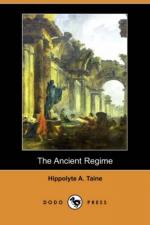of beds of fossils, the prolonged and repeated submersion
of continents, the slow growth of animal and vegetable
deposits, the vast antiquity of life, the stripping,
fracturing and gradual transformation of the terrestrial
surface,[4] and, finally the grand picture in which
Buffon describes in approximate manner the entire
history of our globe, from the moment it formed a
mass of glowing lava down to the time when our species,
after so many lost or surviving species, was able to
inhabit it. — Upon this science of inorganic
matter we see arising at the same time the science
of organic matter. Grew, and then Vaillant had
just demonstrated the sexual system and described the
fecundating of plants; Linnaeus invents botanical
nomenclature and the first complete classifications;
the Jussieus discover the subordination of characteristics
and natural classification. Digestion is explained
by Réaumur and Spallanzani, respiration by Lavoisier
; Prochaska verifies the mechanism of reflex actions
; Haller and Spallanzani experiment on and describe
the conditions and phases of generation. Scientists
penetrate to the lowest stages of animal life.
Réaumur publishes his admirable observations on insects
and Lyonnet devotes twenty years to portraying the
willow-caterpillar; Spallanzani resuscitates his rotifers,
Tremblay dissects his fresh-water polyps, and Needham
reveals his infusoria. The experimental conception
of life is deduced from these various researches.
Buffon already, and especially Lamarck, in their
great and incomplete sketches, outline with penetrating
divination the leading features of modern physiology
and zoology. Organic molecules everywhere diffused
or everywhere growing, species of globules constantly
in course of decay and restoration, which, through
the blind and spontaneous development, transform themselves,
multiply and combine, and which, without either foreign
direction or any preconceived end, solely through
the effect of their structure and surroundings, unite
together to form those masterly organisms which we
call plants and animals : in the beginning, the
simplest forms, and next a slow, gradual, complex
and perfected organization ; the organ created through
habits, necessity and surrounding medium; heredity
transmitting acquired modifications,[5] all denoting
in advance, in a state of conjecture and approximation,
the cellular theory of later physiologists[6] and
the conclusions of Darwin.[7] In the picture which
the human mind draws of nature, the general outline
is marked by the science of the eighteenth century,
the arrangement of its plan and of the principal masses
being so correctly marked, that to day the leading
lines remain intact. With the exception of a
few partial corrections we have nothing to efface.




